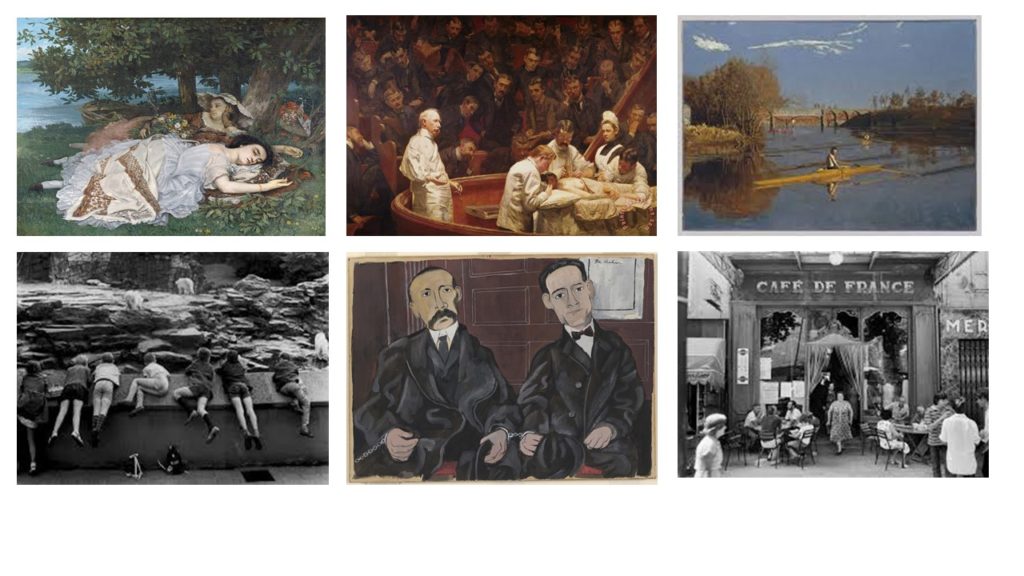




MY FAVOURITE PAGE SPREAD:







‘The Erratics’ is a collection of work comprised of sculptures, photography as well as a book. The body of work is focused of rock formations and sculpted chalk with the subject of the photos alternating across pages between the found rocks (particularly the stones within the desert at the start of the book) where these monolithic structures are contrasted with the man mad chalk sculptures. The use of sliced chalks allows the contrast of the textured, natural surface of the stone as well as the smooth faces where it has been cut. This lets the subjects interact with the lighting in an interesting manner and creates variety for the 3D form of the object. The introduction of the smooth faces makes the 3D forms less distinguishable, bringing the photography more into abstraction. The book is shot in black and white which I find allows for better exploration of tone and contrast, this results in a series of impactful, minimalist images. The images are shot with alternating between studio and natural lighting; due to the lack of color I cannot tell what type of studio lighting was used however due to the soft drop shadows, diffusers were most probably used, likely in conjunction with reflectors in order to cast light on some of the hidden details of the subjects.
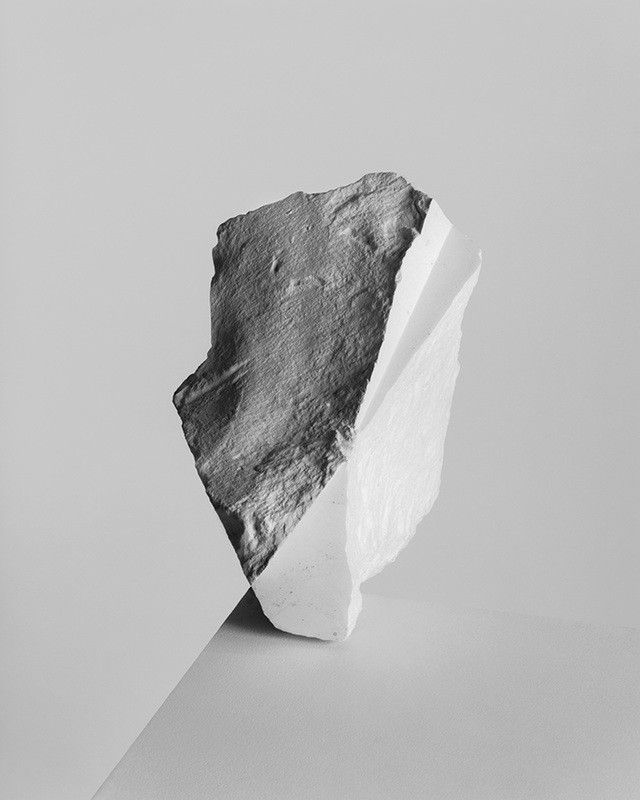
Pictured above is the cover photo for the book, A small aperture has been used in order to achieve a high level of detail across the images, this can be seen as the focus appears to be the same across the foreground and the subject of the image. It is hard to determine the length of shutter speed from the image since it is a studio shot without color, as such the color depth cant be used to infer the shutter speed. It is likely that the shutter speed is short however since it is a studio shot and the use of spot lamps can allow for a faster shutter. The cut across the chalk is intentionally lined up with the edge of the desk in order to create the illusion of the conjunction of 2 separate images into one. This makes it more difficult to distinguish particular forms bringing the image more into the lines of abstract.
produce a new mind map and mood board based around how you interpret the theme of OCCUPATION Vs LIBERATION now
Liberation Ideas:
Occupation:


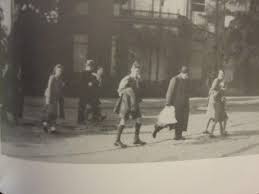
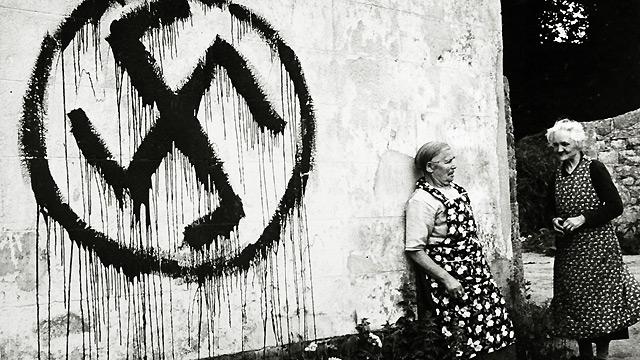
Bernd and Hilla Becher were a photography duo whose work primarily centered around typologies of various industrial architecture. They photographed industrial architecture for forty years across North America and Europe. As a duo they formed the ‘Becher School’ (Düsseldorf School) and have been awarded the Erasmus prize and the Hasselblad Award for their roles as photography professors.
Bernd Becher (1931-2007) was a Siegen born artist. He studied painting at Staatliche Akademie der Bildenden Künste Stuttgart for three years then went on to study typography under Karl Rössing at the Kunstakademie Düsseldorf for two years.
Hilla Becher, born Hilla Wobeser (1934-2015) in Potsdam. Prior to studying photography, Hilla had an apprenticeship with a local photographer. Hilla went on to study photography at Kunstakademie Düsseldorf for three years.
Bernd and Hilla began to work together on their typologies, after two years of collaboration they married.
Their photography follows a very journalistic approach with elements of abstract. They were shot using natural light on a black and white SLR. Since the subjects are often substantially darker than the background it is likely the images were shot using quite fast film. with a fast shutter resulting in a higher degree of contrast.
The typologies feature series of visually similar images, laid out in a grid like format.

The image above is a prime example of the typology work of the Bechers; the images shows a series of very visually similar series of photographs of various buildings. The images show aspects of abstraction, featuring minimal 3D forms, emphasized by the front on images of flat faces of buildings. The contrasting cross-beams are used to introduce more shape into the photographs.
Question – How does fashion shape social identities?
-Opening quote-
-Introduction (250-500 words) Area study, what artists are you analysing, why, how will you respond to their work, how will you respond to essay question.
Explain what the essay is going to do.
-Paragraph 1 (500 words) Art historical/theoretical context, photography and visual culture relating to area study. Make links to movements/isms + methods used by critics and historians.
-Paragraph 2 (500 words) Analyse first artist/photographer in relation to your essay question. Present and evaluate your own images and responses.
-Paragraph 3 (500 words) Analyse second artist/photographer in relation to your essay question. Present and evaluate your own images and responses.
-Conclusion (250-500 words) Draw parallels, explore differences/ similarities between artists/photographers and that of your own work that you have produced.
-Bibliography – List all relevant sources used
Shoot 1/2 –
I will be shooting frontal shots of the sea wall as well as some close up photography of interesting sections of the wall. I will also be taking establishing shots of the beach itself and the ocean. Any fortifications encountered will also be photographs such as Gun-site.
This will be done throughout various times of day in order to give different types of lighting. As such this will be done across 2 shoots.
Shoot 3 –
Take shots of various fortifications across jersey. Focus on abstraction and minimal use of 3D forms.
This will be done at noon to give flat lighting, preferably with overcast weather to soften the lighting.
Shoot 4 –
I will photograph some concrete sculptures using studio lighting similarly to the works of Darren Harvey-Regan besides the clean cut edges of the chalk.
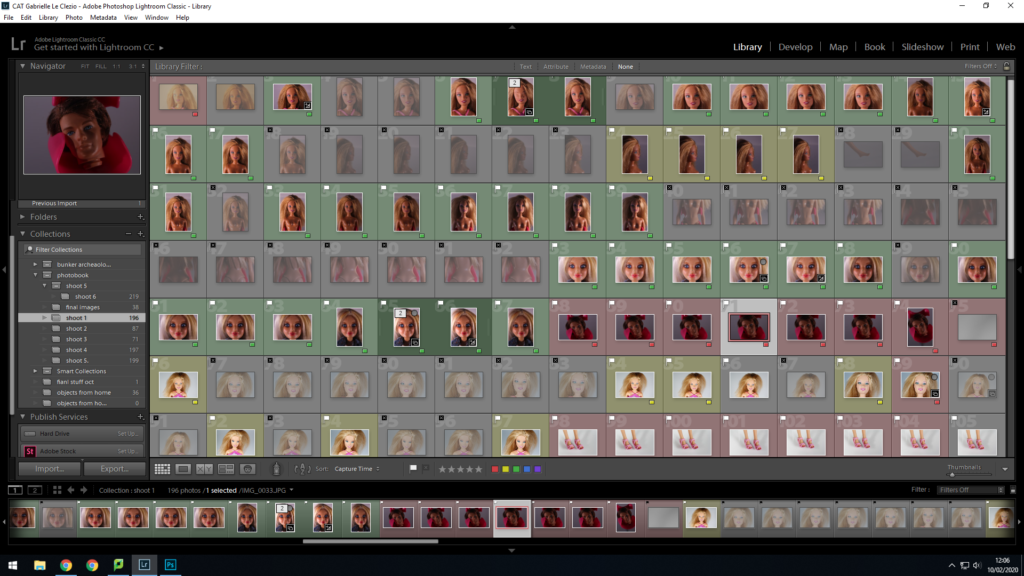
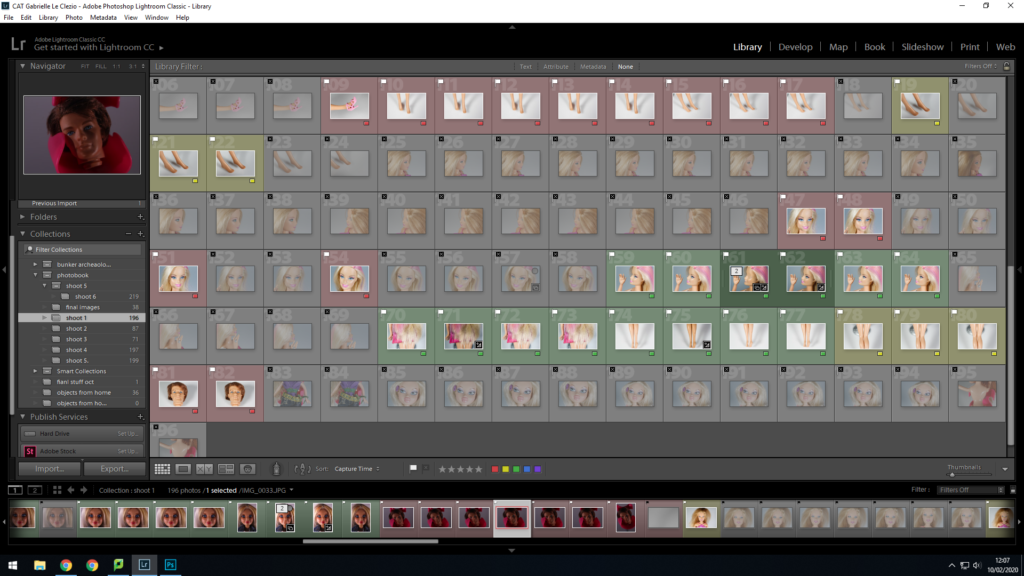
My first Shoot was really successful. The only real problem I had was keeping the dolls upright. I had planned on using a tripod but decided not to because I wanted some real close up. I went into light room and made my selection.I went through them all and flagged the good ones and bad ones. I then color coded the ones I might edit, the ones I may edit and the ones I wont edit. I then adjusted a few of them on light room before editing them in Photoshop.


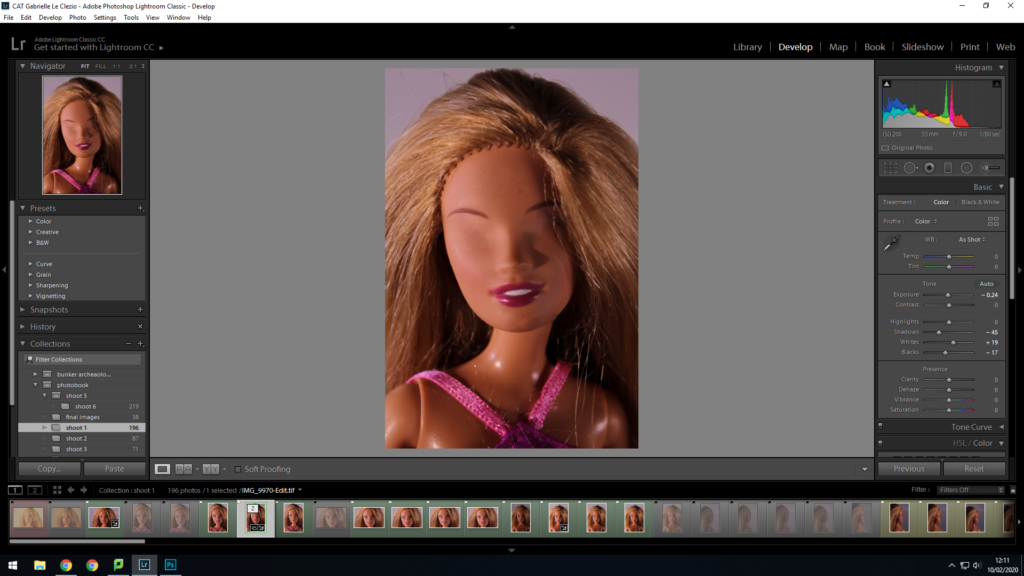
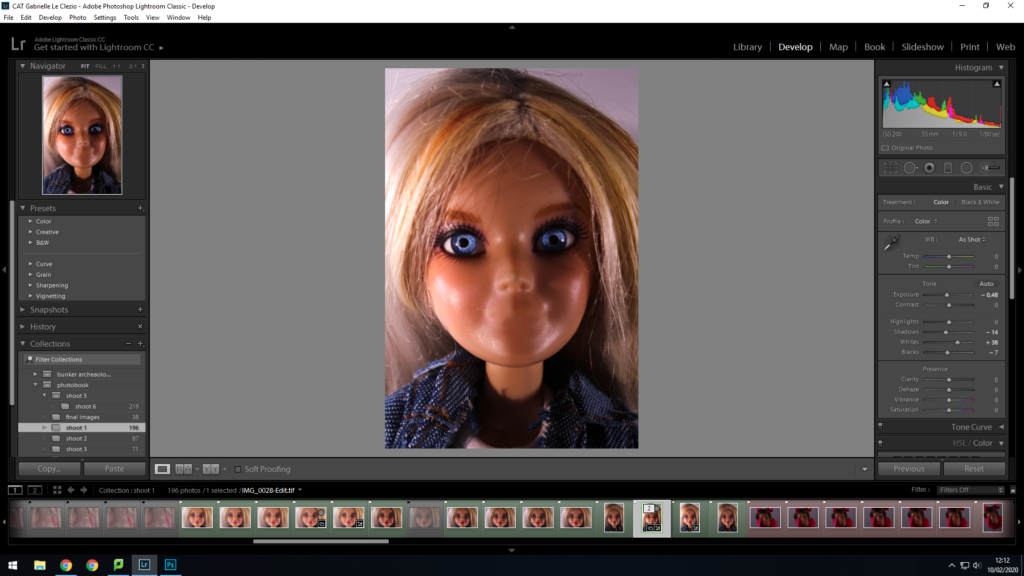
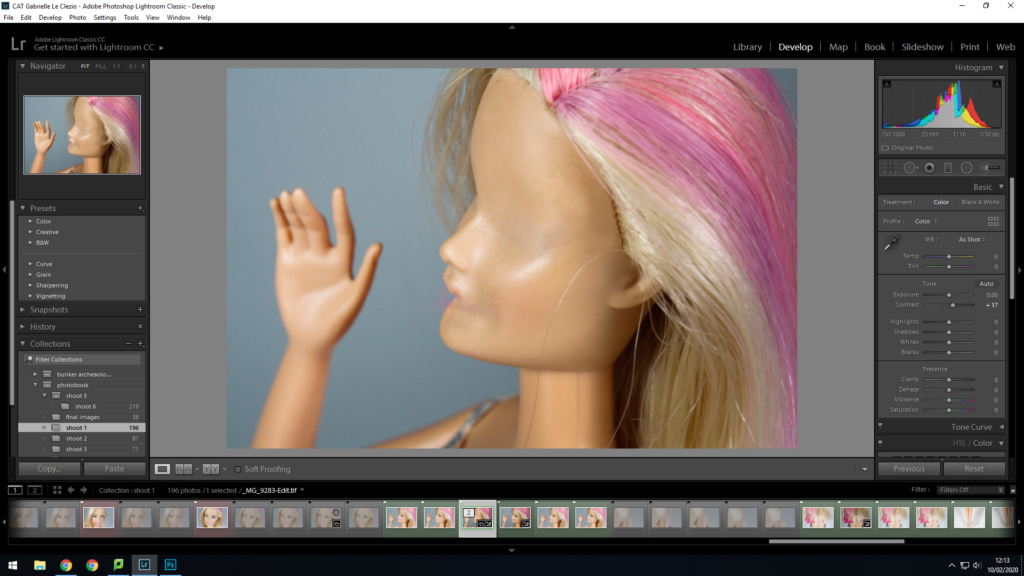


Daniel Meadows, born in 1952, is a British photographer. He is from Gloucestershire. In this post I will be researching his photographic project, “June street”.

June street is essentially a series of family portraits Meadows has taken of British families in a documentary style. The aim of all these images was to capture the essence of every day, ordinary people. It’s clear from all these images that these are everyday working class families, as there’s nothing very extravagant or luxurious in the pictures. All these images were taken in the 1970s.
What attracted Meadows to photographing these people were the fact that all the houses on this street were awaiting demolition, and also the fact that it had been the street used to film the British soap, Coronation street.
“As a photographer, my principal subject was – and remains – the British people” – Source

I decided to use Meadows as one of my chosen case studies as I like how his portraits portray the family unit in their environment, as I feel it can give the viewer a sense of knowledge surrounding the people in the images, as their environment can reveal a lot about them. I will use his work as inspiration when taking my own environmental portraits of my family to show both my mum’s and dad’s new families, which will represent their new relationships and lives since splitting up. I think this will be a successful way to depict this chapter of their lives as it will show viewers new relationships, and other things of significance in their life.
“I’m not interested in celebrities, just ordinary folk.”– Source
In the video below, Meadows analyses his own work and also explains additional context regarding a selection of the image he took.
Analysis:
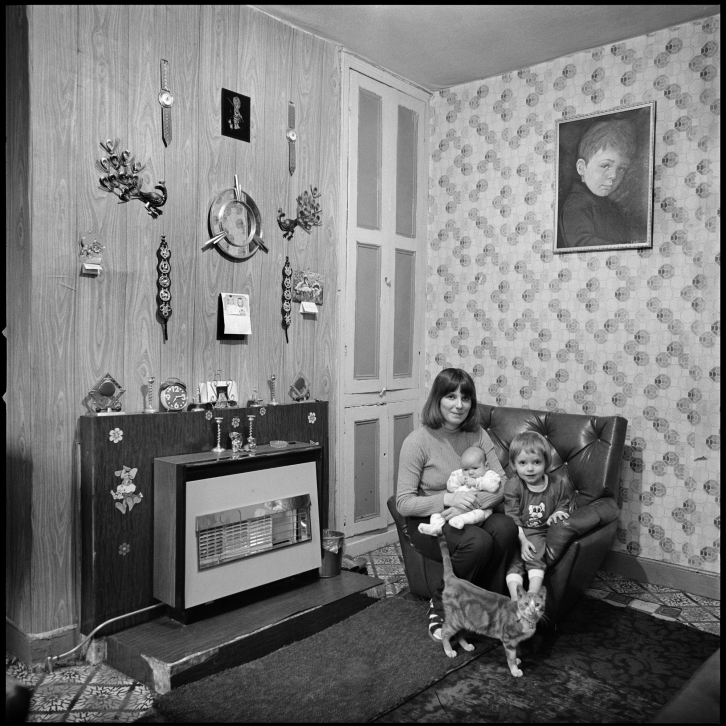
Technically, the composition of this image is very pleasing to the eye as the photographer has used the rule of thirds by placing the subjects on the right side of the frame. I think this balances the environment and the family perfectly in the image.
Visually, We can see what appears to be a mother, her 2 children and a cat in their home environment. Behind her we can see what appears to be a painting or image, likely of someone of importance, as it is hanging centrally on the wall. We can also see objects hanging on the wall which adds more personality to the image.
We know contextually, that Meadows photographed different families, all working class, and their individual structures on “June street” in Salford, where 20 houses were awaiting demolition.
I think that conceptually, this image may show the bond of a single parent family as we see the mother in very close proximity to her children, and her expression shows she is very happy. Although, contextually I know at this time being single and working class would come with very difficult struggles and hardships, the strong sense of community on this street would have probably made life a little bit easier.
In this blog post I will be researching and exploring the work of Sian Davey, in particular, her project 'Martha'. What I believe I will take from researching Davey's work is how to capture moments in time and how to photograph people from a different perspective. She also happens to feature twins in her project which will give me ideas on how to capture them both as a collective whilst showing their individuality. A useful website is: https://www.lensculture.com/articles/sian-davey-martha It features Daveys talking about why she started this project and also features a lot of images from the project.

This is the image called twins. Although you can tell that the two girls do look similar, I think that Daveys has been able to capture their individuality and show that twins are separate people with separate identities. These two girls do resemble my twin sisters personalities, Scarlett is a lot more like the twin on the lest, tomboyish with her hair down a lot, her expression makes me believe that this girl is strong willed and outgoing as she is boldly staring into the lens which is what Scarlett is like as she is very extroverted. Phoebe represents the twin on the right, her hair is constantly in plaits, and her looking away from the lens makes me believe she is more introverted which is also like Phoebe as she can sometimes be a bit shy towards new people she meets.
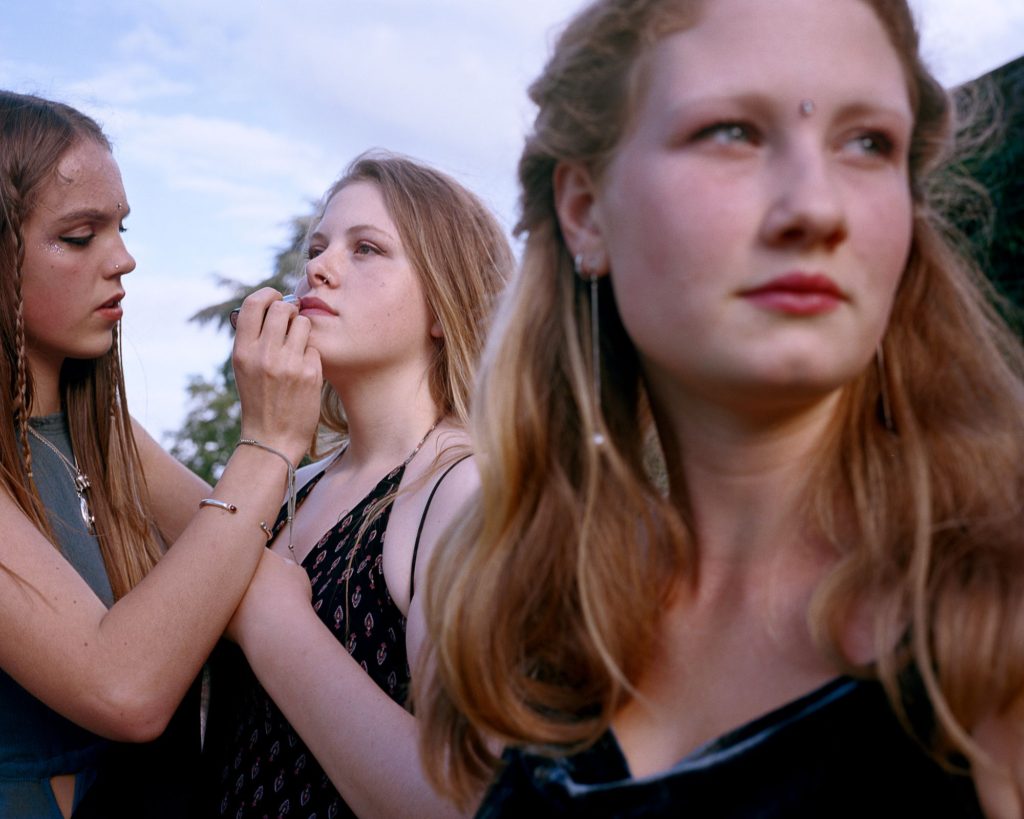
This image is called prom. I really like the depth of field used in this image as although it focuses on the girls doing their makeup in the background, the blurriness of the girl at the front creates a sort of pictorialism feel to the image. I also feel like this image resonates with my sisters because Phoebe loves makeup and doing it on both herself and others. Scarlett isn't very good at makeup and often goes to Phoebe to have her do it for her. The makeup in this image is very simplistic and natural which is often what Phoebe and Scarlett go for as they are only thirteen, still children but starting to grow up. This image also gives me inspiration for my own photoshoots because although this activity is just a day to day activity, it is very intimate and requires the trust of others to alter your appearence and enhance your beauty.
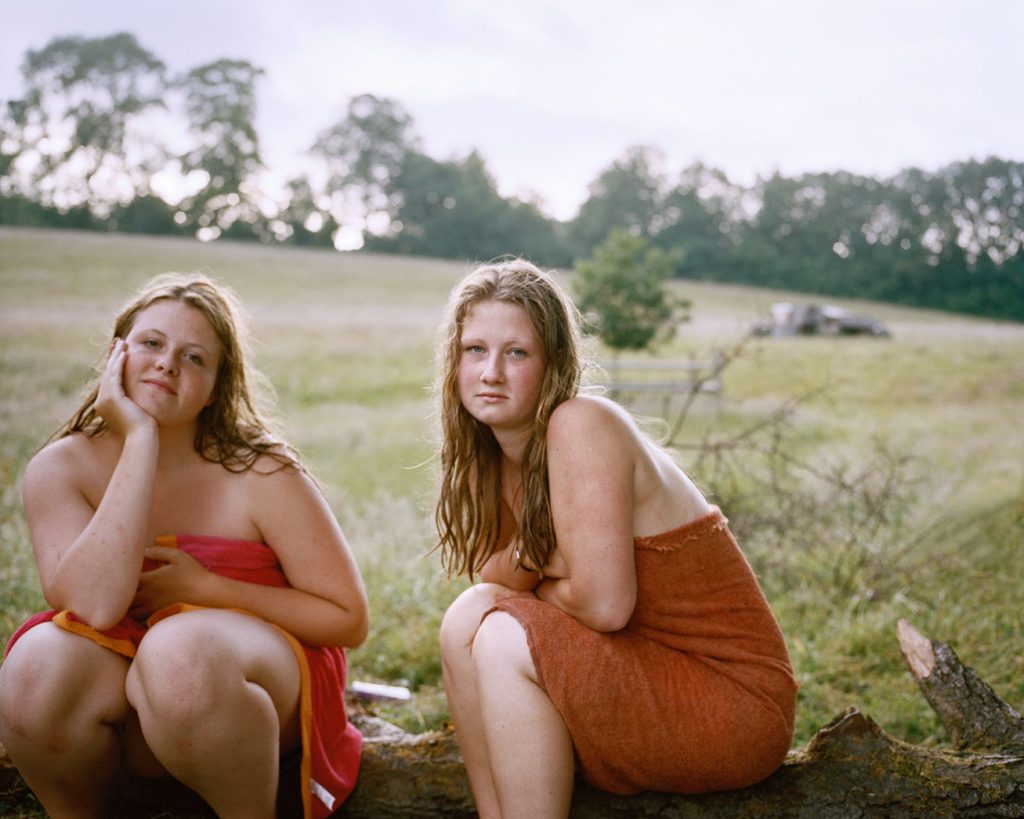
This image will be another image that I will take inspiration from. Me and my family are about to go on holiday to Bali, and we are right by the sea so we will be swimming a lot. Whenever we are on holiday my sisters are always in and out og the water so are constantly lounging about in towels. Although we won't be in a similar environment to this image, I can have my own twist on this image. I like the intimacy in this picture as the girls are very exposed but look so comfortable around eachother. As my twin sisters have such a strong bond, they are very comfortable around themselves so I feel an image similar to this will be able to demonstrate their unique connection and relationship to eachother.
PICTORIALISM
Pictorialism was first invented in the 1860s and has continued to be extensively popular till around 1910s, and initially began staging scenes which influenced Tableuax. Pictorialism is the development of photography into the reinvention of an art form placing beauty, tonality, and composition above creating an accurate visual record. This was where photography finally began to be fully accepted and began to be seen on the same line of painting and start to have it recognised as such by galleries and other artistic institutions. In the beginning of photography it was mainly for scientific and representational purposes. This soon shifted in the 1950s when advocates such as the English painter William John Newton who suggested that photography could also have huge artistic trait.
KEY CONVERSATIONS/CHARACTERISTICS
When photography first came about, and people first wanted it to be portrayed in the light of art and paintings photography was an entirely mechanical medium, its common that labour-intensive darkroom processes to produce unique prints. when printing the images it was common that other colours were used other than black and white ranging from warm brown to deep blue and may present visible brush strokes or other manipulation of the surface. Photograph was a way of projecting an emotional intent into the viewer’s realm of imagination.
METHODS/TECHNIQUES/PROCESSES
ARTIST ASSOCIATION
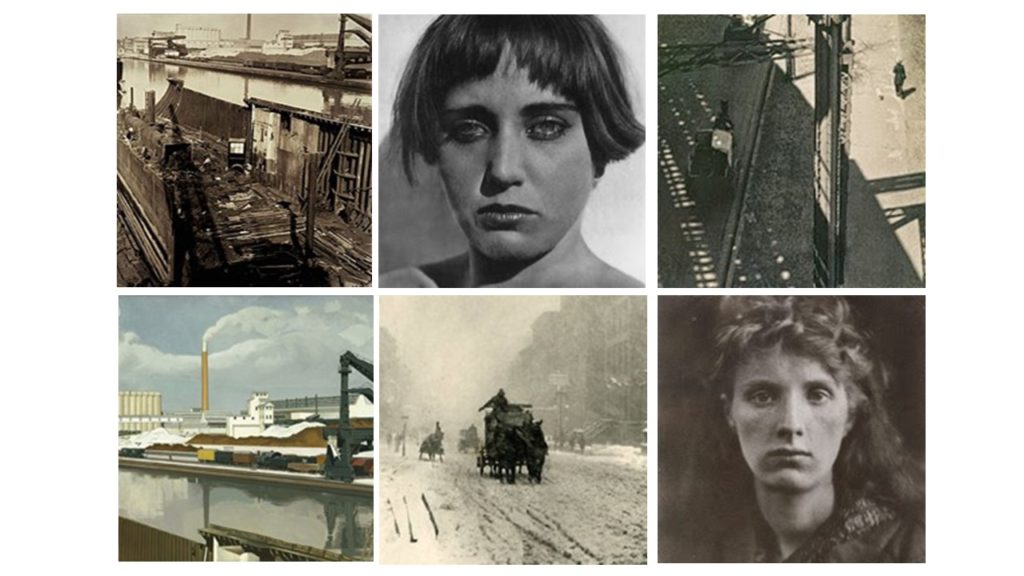
REALISM
Photo realism which now also know as super-realism, was first invented in America as an art movement in the 1960s, and used photography as its basis for inspiration. Photo realism developed over time out of pop and minimalism movements that preceded it. Photo realism looked at breaking down hierarchies of popular topics where people what to present a view on a particular subject, for example cars, shops etc. It is presented in the genre of art that encompasses painting, drawing and other graphic media, this is where artist studies a photograph and the attempts to reproduce and recreate the as realistically as possible in another medium.
KEY CONVERSATIONS/CHARACTERISTICS
Photo realism is all about creating and producing photographs which are representable of something else and shows a real life situation, focuses a lot of little detail and shapes within the picture. As well as this it try’s to project a motion of feeling or an impact on our lives- documentary photography.
ARTSIST ASSOCIATION
